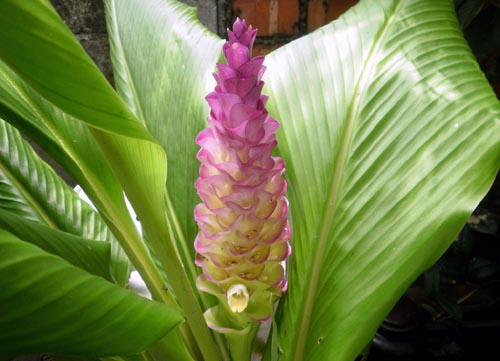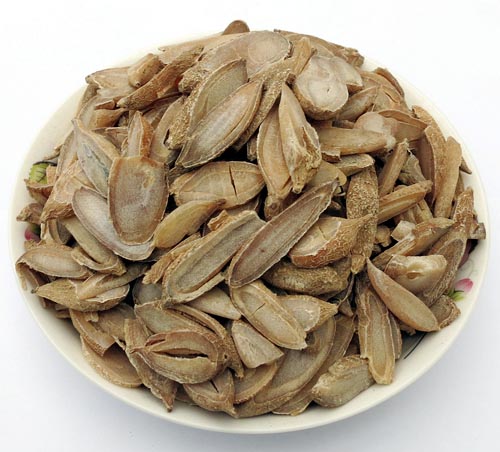The source is from the tuberous root of the perennial herbage Curcuma aromatica Salisb., and C. zedoaria (Berg) Rosc. or C. longa L. or C. kuangsiensis S. lee et C. F. Liang, family Zingiberaceae. The medicinal material is dug and collected in autumn and winter, cleaned, dried in the sun and cut into pieces after being boiled thoroughly in boiling water. The raw one can be used.
Medicinal Properties: Pungent and bitter in flavor, cold in nature and attributive to the heart, liver and gallbladder meridians.
Actions: Circulate the blood, arrest pain, promote flow of qi and disperse the stagnated qi, cool the blood and clear away heat from the heart, normalize the gallbladder to cure jaundice.

Application
1. It is indicated for distention and pain in the chest and hypochondrium, irregular menstruation, dysmenorrhea and abdominal masses, etc., due to qi stagnation and blood stasis. For pain in the chest and hypochondrium, it is combined with Danshen (Radix Salviae Miltiorrhizae), Chaihu (Radix Bupleuri), Xiangfu (Rhizoma Cyperi), and Zhike (Fructus Aurantii), etc. ; for depression of liver-qi with fever, abdominal pain before menstruation, combined with Chaihu (Radix Bupleuri), Xiangfu (Rhizoma Cyperi), Danggui (Radix Angelicae Sinensis) and Baishaoyao (Radix Paeoniae Alba) ; for mass in the hypochondrium, combined with Danshen (Radix Salviae Miltiorrhizae), Biejia (Carapax Trionycis) and Qingpi (Pericarpium Cirri Reticulatae Viride ) .
2. It is used for damp febrile disease, mental confusion due to turbid phlegm, fullness and
oppression in the epigastrium, unconsciousness; and epilepsy and mania due to phlegmatic mental confusion. For the former, it is usually combined with Shichangpu (Rhizoma Acori Graminei), Zhizi (Fructus Gardeniae), and Lianqiao (Fructus Forsythiat), etc., such as Changpu Yujin Tang (Decoction); for the latter, it is usually combined with Mingfan (Alumen), such as Baijin Wan (Pill).

3. For bleeding due to blood-heat manifested as haematemesis, epistaxis, hematuria and unsmooth menstruation, etc., which is accompanied by blood stasis, it is combined with Shengdihuang (Radix Rehmanniae ), Mudanpi ( Cortex Moutan Radicis ) , Zhizi ( Fructus Gardeniae ) , and Niuxi ( Radix Achyranthis Bidentatae), etc..
4. For jaundice of dampness-heat type, it is usually combined with Yinchen (Herba Artemisiae Scopariae), Zhizi (Fructus Gardeniae), etc..
Usage and Dosage:
3 - 10 g is used in decoction for oral use, and 2 - 5 g of the powder is taken.
Notes:
It's incompatible with Dingxing (Flos Caryophylli).







